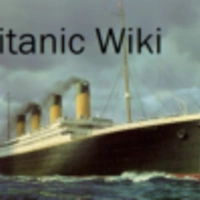Frederick Fleet was a lookout of the Titanic. He survived the sinking.
Fleet was the first person to see the iceberg and he rang the bridge to proclaim, "Iceberg, right ahead!" Fleet testified at the inquiries that if he had been issued binoculars, he would have seen the iceberg sooner, because he said it was a blue iceberg in calm seas on a moonless night. However, all other survivors who saw the iceberg said it was white.
During his testimony at the U.S. Inquiry, Fleet stated he was so uncertain about how long before the collision he saw the iceberg, that he could not be sure if he saw it an ten minutes or an hour beforehand. He did, however, admit that the iceberg appeared to get larger as the ship approached it. [1]
Biography[]
Early life[]
Fleet was born in Portsmouth on 15 October 1887. He never knew his father and his mother abandoned him to run away with a boyfriend to Springfield, Massachusetts, to never be heard from again. Frederick was raised by a succession of foster families and distant relatives. In 1903, he went to sea as a deck boy, working his way up to Able Seaman.
Before joining Titanic, he had sailed for over four years as a lookout in RMS Oceanic. His address was given as Norman Road, Southampton.
On the Titanic[]
As a seaman, Fleet earned five pounds per month plus an extra 5 shillings for lookout duty. And it was as a lookout that Fleet joined the Titanic in April 1912 in Southampton.
On the night of April 14, at 11:39 P.M., he spotted a vague object, rapidly growing bigger and then it hit him it was an iceberg. It was rather suspicious that he and his colleague Reginald Lee contradicted eachother in their testimonies about the conditions after the disaster. But what was more peculiar was the fact they spotted the berg too late. They had a view of eleven miles. It appears they didn't look at all times because of the cold and wind, but were peeking now and then over the brim of the crow's nest and had a small rag or sail covering the back. Sir Alfred Chalmers, an old martime expert of the English Board of Trade, later put the blame of the tragedy on the 'inadequate lookout' which is understandable.
After spotting the obstacle on the path of the mighty ship, he rang the bell three times, and grabbed the telephone to contact the bridge. After a few seconds, Sixth Officer James Moody picked up and asked: "What did you see?" "Iceberg dead ahead sir." Moody replied very shorty with a "Thank you". Meanwhile the clanging bell had startled First Officer William Murdoch, who was on watch on the bridge. Action was taken immediatly, and he shouted the order to 'hard-to-port' and ran the engines to full astern by moving the telegraph. The iceberg couldn't be avoided and a minute after spotting the iceberg, Titanic was too close to completely avoid it. Under the waterline, the hull scraped along parts of solid ice, which created enough damage to let a lot of seawater in, and she started sinking. After establishing that the ship would sink around midnight, Captain Smith gave the order to prepare evacuation. The lifeboats were readied.
Fleet was one of the Titanic crew members assigned to man one of the lifeboats, after the ship started to go down. He ended up in lifeboat 6 with Robert Hichens, the quartermaster at the helm that tried to avoid the iceberg. Hichens was in charge, and acted like a tyrant. Fred Fleet was one of the sailors that rowed the boat, but the famous unsinkable Molly Brown remarked that he looked like a duck with a broken wing. So she took the oar from the rather shy Fleet. "I'll show you how it's done, son".
After the sinking[]
After he survived the ship's sinking, he was called upon as one of the most important witnesses at the Inquiries.
Later life[]
Late, he served in the merchant service through World War I and again in World War II, after having been unemployed in the 1930s.
Fleet served on Titanic's sister ship RMS Olympic from 1920 to 1935 and signed on as ship's Look Out Man and Able Seaman. He left the company after finding out that the crew members of the Titanic were reminders to the White Star Line of the sinking. The Officers of Titanic for example had to deal with this and it hindered their career, or so they claimed. They noticed they got treated differently and were often sent on less interesting routes like the one to Australia.
When his wife died shortly after Christmas 1964, he was evicted from her home by her brother and went back to his own home. At some point, he was selling newspapers on the streets. The grief of his loss became too much for him, he got depressed and committed suicide by hanging two weeks later on January 10th, 1965. He was the last surviving lookout.
Legacy[]
Many have said that in many ways, Fleet was also the last victim of Titanic. People who knew him said that he suffered from terrible guilt all his life because he had lived while so many perished. It is possible he may have had Survivor’s Guilt and Post Traumatic Stress Disease. Out of 2,209 passengers and crew in Titanic, he was one of only 706 who survived. Fleet was buried in a pauper's grave at Hollybrook Cemetery, in Southampton. The grave went unmarked until 1993, when a headstone bearing an engraving of Titanic was erected through donations by the Titanic Historical Society.
Portrayals[]
As the first man to see the iceberg, Frederick Fleet is an important historical figure who appears in almost every film and television version of the Titanic. The only Titanic productions that he did not appear were 2012 Miniseries Titanic and The Legend of Titanic.
In Night and Ice (1912)[]
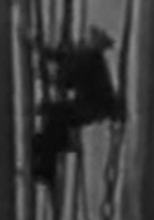
Frederick Fleet in In Nacht Und Eis (1912)
In In Night and Ice, Fleet is portrayed by an unknown actor. The film depicts him spotting the iceberg with a telescope, which the real Fleet did not use.
Titanic (1943)[]
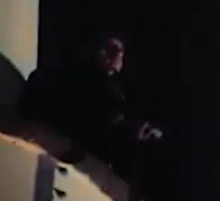
Frederick Fleet in Titanic (1943) Note: This footage was used in "Screen Directors Playhouse" in 1955 and "Telephone Time" in 1957.
Titanic (1953)[]
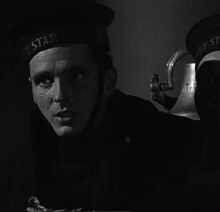
Lookout Devlin, based off Frederick Fleet in Titanic (1953)
Strangely, his role as a lookout was replaced by fictional lookout named Devlin, which was portrayed by James O'Hara.
A Night to Remember (1958)[]
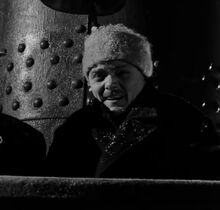
Bernard Fox as Frederick Fleet in A Night to Remember (1958)
In the 1958 film A Night to Remember, Fleet is portrayed by Bernard Fox (uncredited).
S.O.S. Titanic (1979)[]
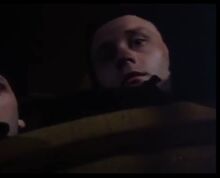
Frederick Fleet in S.O.S Titanic (1979) Note: This footage was used in Danielle Steel's No Greater Love (1995)
In S.O.S. Titanic, Fleet is portrayed by Alec Sabin.
1996 Miniseries Titanic[]
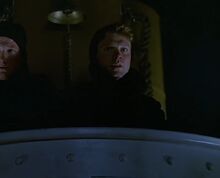
Frederick Fleet in the 1996 Miniseries Titanic
In the 1996 Miniseries Titanic, Fleet is portrayed by Byron Lucas.
Titanic (1997)[]
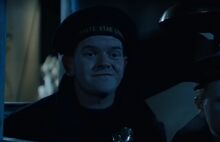
Scott G. Anderson as Frederick Fleet in Titanic (1997)
In the 1997 film Titanic, Fleet is portrayed by Scott G. Anderson. When he contacts the bridge to inform about the iceberg in front, the words he used to communicate with Sixth Officer Moody were pretty much historically accurate with how it was said in real life. Some extra drama was added, by making him say he could 'smell ice, when it's near.' about an hour or so before they spot the iceberg. His colleague Reginald Lee dismissed the statement as 'bullocks'. This causes the scene later on to be hilarious, because right after impact, Lee shakes Fleet in frustration: "Smell ice, can ya? Bleeding Christ!" Fleet later appears in lifeboat 6 and was taught how to row by Molly Brown in one of the deleted scenes. He was very shy and silent, and admitted that he wasn't taught to row in the first place.
Titanic: The Legend Goes On[]
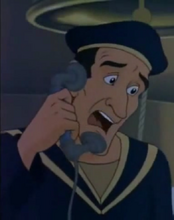
Frederick Fleet in Titanic: The Legend Goes On (2000)
In the Titanic: The Legend Goes On, Fleet is voiced by an unknown actor.
| ||||||||||||||
Sources[]
- https://www.titanicinquiry.org/USInq2Aminq04Fleet01.php
- 'Titanic' ©1996 (second print, 1998) Edward P. De Groot
- https://www.youtube.com/watch?v=k1xkqaeLkGs Titanic: Southampton Remembers - BBC South Today
